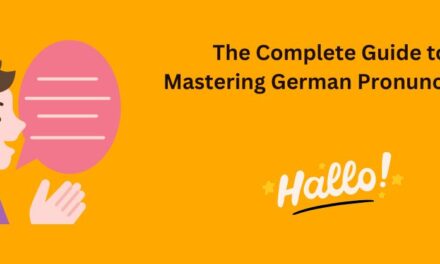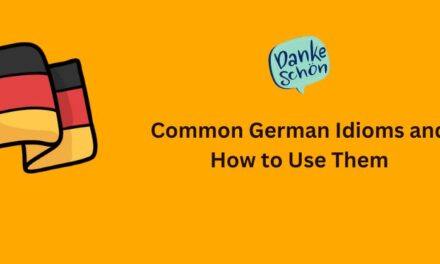Der, Die or Das? A Beginner’s Guide to Mastering German Articles

Let’s be honest – as a beginner German learner, conquering when to use der, die and das can be tricky. But with the right memorization tips, guessing strategies, and plenty of practice, you can crack the code on these pesky articles.
In this article, we’ll walk you through everything you need to know to master German articles and use them with confidence. We’ll also cover related challenges like noun gender, case endings, and articles with names.
Why Proper Article Usage Matters in German
Why do we even need to worry about articles in German? Can’t we just ignore them and still get our point across? I wish it were that simple! But the truth is, German articles are critical for a few important reasons:
- They show you understand the grammar rules – using proper articles makes you sound educated and competent in German, rather than marking you as a clueless beginner.
- They identify the noun – articles tell the listener the case, gender and number of the noun, which is crucial info.
- They help avoid confusion – the wrong article can totally change the meaning of a sentence. Not ideal!
- They make sentences flow – the articles der, die and das link words smoothly together when you’re speaking or writing.
So in short, nailing down articles helps you speak and understand German more easily. Think of articles like the glue that holds sentences together. Don’t underestimate those little words!
The Difference Between Definite and Indefinite Articles
German has definite articles (der, die, das) which refer to something specific, and indefinite articles (ein, eine, einen) which refer to something general. The article used depends on the case, gender and number of the noun.
Definite Articles
Definite articles refer to something known or particular:
- Der – Masculine singular nominative (subject)
- Der Mann (the man)
- Die – Feminine singular nominative
- Die Frau (the woman)
- Das – Neuter singular nominative
- Das Kind (the child)
- Den – Masculine/neuter singular accusative (direct object)
- Ich sehe den Mann. (I see the man).
- Die – Feminine singular accusative
- Ich sehe die Frau. (I see the woman).
- Dem – Masculine/neuter singular dative (indirect object)
- Ich helfe dem Mann. (I’m helping the man).
- Der – Feminine singular dative
- Ich danke der Frau. (I thank the woman).
- Des – Masculine/neuter singular genitive (possession)
- die Jacke des Mannes (the man’s jacket)
- Der – Feminine singular genitive
- die Jacke der Frau (the woman’s jacket)
- Die – Plural nominative/accusative/dative of all genders
- die Männer, die Frauen (the men, the women)
- Der – Plural genitive of all genders
- der Männer, der Frauen (the men’s, the women’s)
Indefinite Articles
Indefinite articles refer to something general or unspecific:
- Ein – Masculine singular nominative
- Ein Mann (a man)
- Eine – Feminine singular nominative
- Eine Frau (a woman)
- Ein – Neuter singular nominative
- Ein Kind (a child)
- Einen – Masculine singular accusative
- Ich sehe einen Mann. (I see a man).
- Eine – Feminine singular accusative
- Ich sehe eine Frau. (I see a woman).
- Einem – Masculine/neuter singular dative
- Ich helfe einem Mann. (I’m helping a man).
- Einer – Feminine singular dative
- Ich danke einer Frau. (I thank a woman).
- Eines – Masculine/neuter singular genitive
- die Jacke eines Mannes (a man’s jacket)
- Einer – Feminine singular genitive
- die Jacke einer Frau (a woman’s jacket)
Tips for Memorizing the Article Rules
Okay, so articles matter in German language. But how can you possibly remember which article goes with which noun?
Associating each noun with the right article takes work. Let’s look at some effective memorization strategies:
- Learn nouns with their articles – Don’t just memorize “Tisch”, memorize “der Tisch”. Associate the two immediately.
- Notice noun endings – Endings like -heit, -keit, -ung are feminine clues.
- Make article flashcards – Write nouns on one side and articles on the other. Drill them.
- Group similar nouns – Memorize household objects together, beverages together, etc. Look for patterns.
- Use pictures or photos – Seeing der Tisch or die Lampe reinforces the article-noun connection.
- Study by category – Memorize der words for jobs, das words for diminutives. Identify patterns.
- Break down compound nouns – Memorize that words ending in -brot use der, like der Butterbrot.
Actively connecting nouns and their articles, categorizing vocab, and looking for patterns are key. The more you proactively associate articles with nouns, the more second nature they’ll become!
30+ Common German Idioms and How to Use Them
Best Strategies for Guessing Articles
When you come across unfamiliar German nouns, you’ll need some article guessing strategies in your toolbox.
Even advanced learners run into unfamiliar nouns. Let’s look at some ways to make smart article guesses:
- Analyze the noun ending – Does it end in something like -ant, -sis, or -in that signals gender?
- Consider the meaning – Male job? Female body part? Neutral diminutive?
- Look for prefixes/suffixes – ge- words are neutral. -in often makes nouns feminine.
- Remember standard rules – Seasons are feminine, infinitives are neutral.
- Guess der for jobs, die for concepts, das for objects.
- Use context clues – Which article was just used that might match this noun?
- Go with your gut if you aren’t sure!
With practice identifying patterns this way, you’ll start naturally recognizing clues about which article to use for unfamiliar nouns.
Tips for Remembering Noun Gender
Since articles depend on the noun’s gender, memorizing whether a noun is masculine, feminine or neuter is crucial.
Before you can choose the right article, you need to know the noun’s gender. Let’s look at some effective strategies:
- Learn the noun’s gender and article together right from the start.
- Memorize prefixes like ge- (neutral) or suffixes like -ung (feminine).
- Make flashcards with the noun on one side and its gender/article on the other.
- Group nouns of the same gender together by topic (i.e. masculine professions, feminine fruits).
- Use colors to represent genders, like blue for masculine nouns, pink for feminine.
- Look for patterns in meaning – male terms are often masculine, female terms feminine.
- If you’re unsure, guess der for professions, die for abstract ideas, das for objects.
Actively focusing on noun gender as you learn vocabulary, not just the noun itself, is key for improving your article skills. With time, you’ll start intuitively recognizing clues about a noun’s gender.
The Role of Case Endings
In addition to gender, a noun’s case ending also determines the article used.
The main cases are:
- Nominative (subject) – Man, Woman, Child
- Accusative (direct object) – den Mann, die Frau, das Kind
- Dative (indirect object) – dem Mann, der Frau, dem Kind
- Genitive (possession) – des Mannes, der Frau, des Kindes
Memorizing common case ending patterns like -en for accusative or -es for genitive will help you quickly recognize which case and article to use. Lots of practice helps!
How to Use Articles with Names, Titles and Places
Proper nouns follow some special rules:
- Names use the article based on gender. Der Max, die Anna, das Kind.
- Occupations often omit the article. Anna ist Lehrerin. (NOT die Lehrerin).
- Geographical names rarely use articles. München ist schön. (NOT das München).
- Aus, von, nach, ab don’t use articles. Ich komme aus Berlin.
- Im, am, zum do use articles. Im Schwarzwald, am Bodensee.
Getting articles with proper nouns correct takes practice. Look for patterns in usage, and explicitly study how native speakers use them.
Common Article Mistakes to Avoid
Even advanced learners mix up articles sometimes. Be aware of the common errors.
Here are some frequent article pitfalls to watch out for:
- Forgetting umlauts – der Tag vs. die Tage. Don’t let plurals trip you up.
- Mixing up der/die endings – Allowing similar endings like -ung or -heit to confuse you.
- Using the wrong article for dativ case – It’s dem Mann, not den Mann.
- Assuming all -er and -e endings are masculine – Die Butter is an exception!
- Using der/das for plural – Only die can be plural, like die Männer.
- Getting confused by proper nouns – Names and places follow different rules.
Staying vigilant about these known mix-up points will help you avoid developing bad article habits. Catch yourself when you make a mistake and correct it.
Practical Tips for Improving Article Skills
To take your article knowledge from theory to mastery, make sure to:
- Read German texts and notice article usage.
- Describe objects out loud using the right articles.
- Learn new vocab with the proper article every time.
- Do targeted article exercises and play article games.
- Listen closely for articles used by native speakers.
- Write your own texts using nouns with articles.
- Ask advanced speakers to correct article mistakes.
- Use flashcards, apps and online courses to reinforce rules.
- Study children’s books for repetitive article examples.
It’s all about applying your knowledge through active reading, speaking, writing, listening and self-testing. Immerse yourself in articles and make them a reflex!
Don’t Get Discouraged – Articles Take Time and Practice
Finally, be patient and kind to yourself through the article learning process. Using der, die and das properly is challenging even for advanced German students!
But with the memorization tips, guessing strategies, and practice advice in this guide, the articles will gradually click.
Celebrate small successes whenever they happen. Keep pushing yourself a little further each day. Stay motivated knowing that mastery is achievable with commitment. You’ve totally got this!











